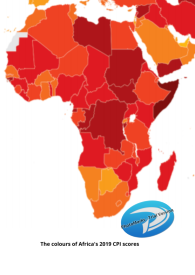
Does social media usage have any impact on country corruption levels? We have investigated the relationship between corruption and social media usage in Africa at a country level and present our findings below.
Methodology
Transparency International’s 2019 CPI scores published in January 2020 are taken to represent the measure of corruption in Africa.
The social media activity at a country level is taken as the subscriber numbers provided for Facebook by Internet World Stats at www.internetworldstats.com as at 31stDecember 2019 and for Twitter by We Are Social as quoted in their ‘Digital 2020’ publication.
The Africa Population numbers are mid-year 2020 estimates taken from the United Nations Population Division published by Internet World Stats at www.internetworldstats.com.
Facebook data was available for 54 African countries in the CPI index but Twitter data was only available for 52 of those countries. These 52 countries were taken as our starting point.
We then removed from the list of 52 countries the 4 countries with distinctly higher corruption levels than the remainder as they did not offer results consistent with the remaining states which we consider to reflect the disruptive effect of very high corruption levels on social and economic behaviour. This leaves a sample of 48 countries.
Statistical robustness
The sample of 48 countries provides a confidence level of 95%. The margin of error is 5%.
| Statistical Method | Facebook Results | Twitter Results |
| Pearson | 0.657 | 0.699 |
| Spearman | 0.672 | 0.625 |
Conclusion
The above results are relatively robust from a statistical perspective. These demonstrate that, for the data used in our two samples, a strong relationship exists between 2019 CPI scores and per capita penetration levels of country Facebook and Twitter subscribers. This implies that the greater the level of public intercourse via social media the lower the level of corruption in the country concerned.


